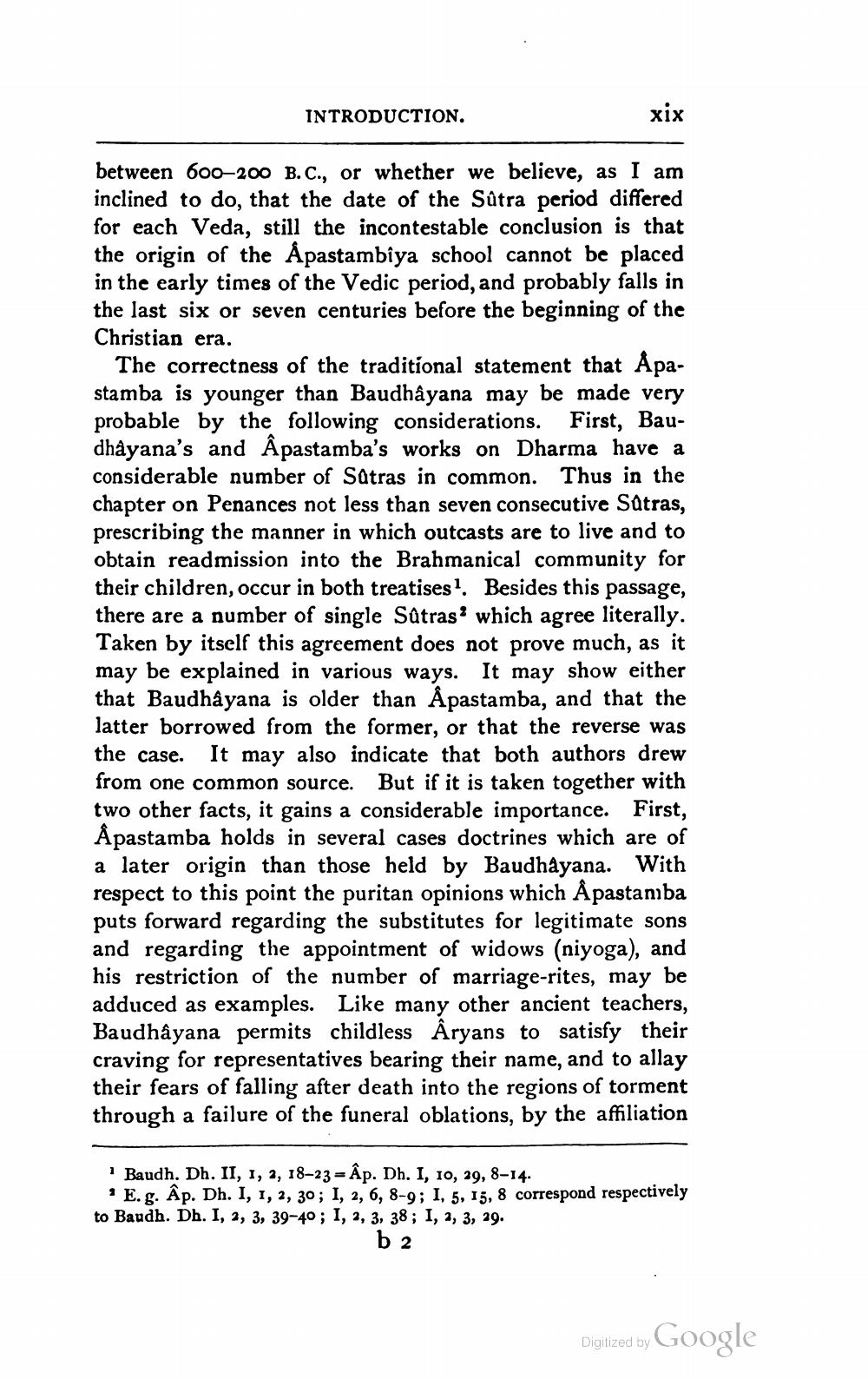________________
INTRODUCTION.
xix
between 600–200 B.C., or whether we believe, as I am inclined to do, that the date of the Sûtra period differed for each Veda, still the incontestable conclusion is that the origin of the Åpastambiya school cannot be placed in the early times of the Vedic period, and probably falls in the last six or seven centuries before the beginning of the Christian era.
The correctness of the traditional statement that Åpastamba is younger than Baudhayana may be made very probable by the following considerations. First, Baudhầyana's and Âpastamba's works on Dharma have a considerable number of Satras in common. Thus in the chapter on Penances not less than seven consecutive Satras, prescribing the manner in which outcasts are to live and to obtain readmission into the Brahmanical community for their children, occur in both treatises?. Besides this passage, there are a number of single Satras which agree literally. Taken by itself this agreement does not prove much, as it may be explained in various ways. It may show either that Baudhayana is older than Åpastamba, and that the latter borrowed from the former, or that the reverse was the case. It may also indicate that both authors drew from one common source. But if it is taken together with two other facts, it gains a considerable importance. First, Åpastamba holds in several cases doctrines which are of a later origin than those held by Baudhayana. With respect to this point the puritan opinions which Åpastanıba puts forward regarding the substitutes for legitimate sons and regarding the appointment of widows (niyoga), and his restriction of the number of marriage-rites, may be adduced as examples. Like many other ancient teachers, Baudhầyana permits childless Aryans to satisfy their craving for representatives bearing their name, and to allay their fears of falling after death into the regions of torment through a failure of the funeral oblations, by the affiliation
· Baudh. Dh. II, 1, 2, 18-23 = Âp. Dh. I, 10, 39, 8-14.
· E. g. Âp. Dh. I, 1, 2, 30; 1, 2, 6, 8-9; 1, 5, 15, 8 correspond respectively to Baudh. Dh. I, 2, 3, 39-40 ; 1, 2, 3, 38; 1, 2, 3, 29.
b 2
Digitized by Google




